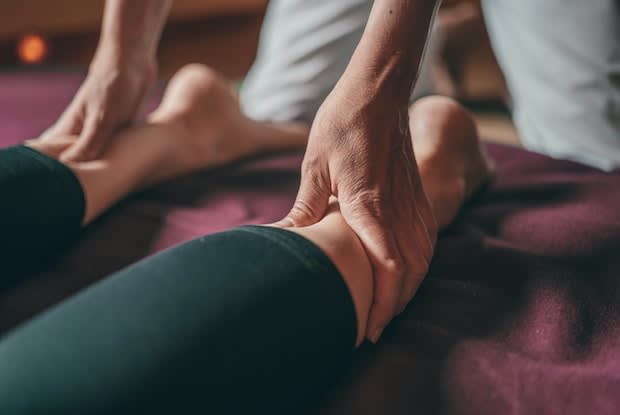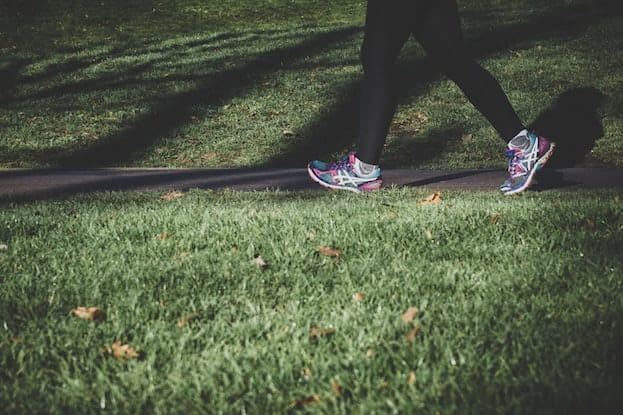Table of Contents
II. Different Types of Blood Clots
What is a Blood Clot?
A blood clot is a cluster of blood that has changed from a liquid to a semi-solid state. The clotting process serves the purpose of preventing blood loss when there is an open wound. However, blood clots usually refer to clusters that form inside a vein or an artery. This type of blood clot can occur when a blood vessel ruptures, and the brain thinks that the area needs to be contained.
These situations can be very dangerous because they may cause partial to complete blockages that cut off oxygen and nutrients to the major organs. Some blood clots will dissolve on their own, but blood thinners like Coumadin (warfarin), Elmiron (pentosan polysulfate sodium), or Eliquis (apixaban) are often needed to prevent serious health complications. If you think you have a blood clot, you should seek your doctor’s advice right away. [1]
The vascular system comprises of blood vessels that carry oxygen-rich blood away from the heart (arteries) and blood vessels that return low oxygen blood to the heart (veins) for reoxygenation. [2] A blood clot that occurs in an artery is called an arterial clot, and a clot in a vein is a venous clot. Arterial clots can cause immediate symptoms, whereas venous clots may occur more slowly. [1] Symptoms may vary based on the size and location of the blood clot. A common place that blood clots occur is in the lower leg. A small clot may cause mild calf swelling and minor discomfort, while a large clot may affect the entire leg and cause major swelling and pain. Tenderness, a warm sensation, and a reddish discoloration on the skin are other common symptoms. A blood clot that occurs in the heart, abdomen, brain, or lungs can cause complications with other symptoms. [1] An arterial blood clot, also called an arterial thrombosis, can occur in the heart and cause a heart attack. When blood flow to the heart is blocked or impeded, symptoms like chest pain, shortness of breath, and dizziness may arise. [3] Heart attacks may result in abnormal heartbeats (arrhythmias), damage to the heart muscles (cardiogenic shock), and the walls of the heart valves may split apart (heart rupture). As you can see, heart attacks are one of the most dangerous and life-threatening complications of a blood clot. [4] Arterial blood clots can also occur near the head and cut off blood flow to the brain, leading to a stroke. A stroke is a life-threatening medical emergency, and prompt treatment is required to avoid permanent brain damage. Strokes that occur due to a blood clot are called ischemic strokes. This type accounts for 85 percent of all stroke cases. Hemorrhagic strokes are the other type and occur when a weakened blood vessel in the brain bursts. [5] A venous clot can lead to a complication called deep vein thrombosis (DVT). This complication can cause a heavy ache in the affected area, usually in the calf or thigh. The pain from a DVT can be intense due to the clot-forming deep within the leg. With DVT, the pain often worsens when you lift your foot toward the knee. [6] Blood clots can move, and a DVT may travel up the leg and into your lungs. When this happens, a pulmonary embolism (PE) may occur, risking damage to the lungs and other organs. PE can lead to heart failure as well, so it is important to seek medical treatment as soon as possible. Symptoms of PE include: Around 900,000 Americans are affected by blood clots each year, so it is important to take steps that reduce your risk. [8] Exercises that improve blood flow, like jogging, biking, or any other aerobic activity, can protect you from blood clots. Many people whose jobs confine them to sitting for long hours do seated leg stretches and exercises that involve tightening and releasing the calves. Even a short, lunch-break walk can help. High cholesterol and high blood pressure are some of the biggest risk factors that cause blood clots, so quitting smoking and eating a cholesterol-friendly diet can also improve your vascular health. If you are concerned about blood clots, talk to your doctor to see if Coumadin (warfarin), Elmiron (pentosan polysulfate sodium), or Eliquis (apixaban) is right for you. The content in this article is intended for informational purposes only. This website does not provide medical advice. In all circumstances, you should always seek the advice of your physician and/or other qualified health professionals(s) for drug, medical condition, or treatment advice. The content provided on this website is not a substitute for professional medical advice, diagnosis, or treatment.
Different Types of Blood Clots
Symptoms
Blood Clot Complications


Reducing Your Risk
